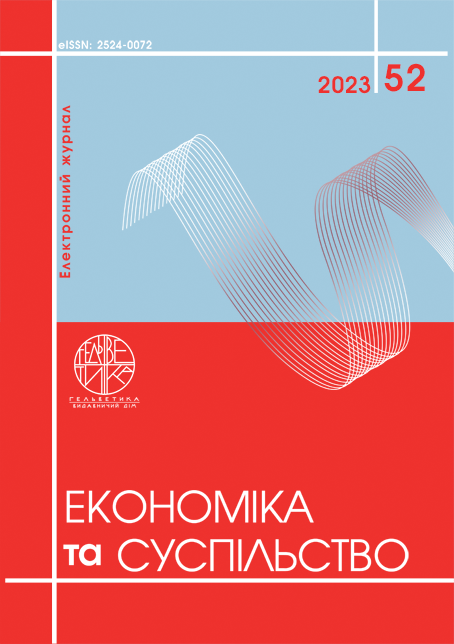КОНТРЗАХОДИ ПОДОЛАННЯ СОЦІАЛЬНО-ЕКОНОМІЧНОЇ НЕРІВНОСТІ В РАЙОНАХ ЕТНІЧНИХ МЕНШИН ПІВДЕННО-ЗАХІДНОГО КИТАЮ
Анотація
У даній статті застосовано комплексний підхід до дослідження способів усунення соціально-економічної нерівності в регіонах етнічних меншин Південно-Західного Китаю та розроблено стратегії для досягнення просторово збалансованого економічного та соціального прогресу в цьому регіоні. Дослідження має два виміри: економічний і соціальний. По-перше, розглядаються способи покращення ситуації в економічній сфері через застосування аспектів економічної ефективності, структурної оптимізації, інноваційного зростання, інвестиційного заохочення, покращення інфраструктури та розвитку людського капіталу. По-друге, досліджуються такі аспекти розвитку в соціальній сфері як справедливість, залучення до управління, безпека, культура та соціальне забезпечення. Запропоновані стратегії просторового розвитку мають першочергове значення для подолання розриву в розвитку між регіонами країни, а також міськими та сільськими районами в межах провінцій, що сприятиме створенню гармонійного суспільства. Ці заходи забезпечують безцінні теоретичні та практичні здобутки для формулювання стратегічної політики сприяння економічному та соціальному розвитку в регіонах етнічних меншин Південно-Західного Китаю.
Посилання
Chen Hongyu (2017). Analysis of the imbalanced development problem from the spatial perspective. The Southern Economy (10), 2–4.
Huang Weijie (2023). Marx's Need Theory and the Significance of the New Era. Ideological and theoretical Front (02), 53-59, 141.
Miao Yishu (2022). The spatial criticism of national-national scale by imbalanced development theory. Heilongjiang Ethnic Cluster (02), 60–65.
Zhigang Wang. (2023). Criticism of neoliberal space political economy: Harvey's perspective and enlightenment. Hunan Social Science (01), 46–51.
Jiang Hua & Sun Zhongliang. (2022). David Harvey's Critical Theory of Time Alienation. The Journal of Qiushi Studies (06), 24–32.
Fu Qing Song. (2015). Multidimensional perspective of imbalanced geographical development and spatial politics reempowerment – takes Harvey's "unified field theory" as a reference. Journal of Huazhong University of Science and Technology (Social Science Edition) (05), 6–11.
Xionghe Qin & Yanming Sun Q (2019). Cross-Regional Comparative Study on Environmental–Economic Efficiency and Driving Forces behind Efficiency Improvement in China: A Multistage Perspective. International Journal of Environmental Research and Public Health, (7).
Zheng Jianghuai & Ran Zheng (2021). Industrial structure and economic growth effect of intelligent manufacturing technology innovation – Based on the empirical analysis of the two-sector model. Journal of Renmin University of China (06), 86–101.
Ni Tingting & Wang Yuetang (2022). Regional administrative integration, factor marketization and enterprise resource allocation efficiency. Quantitative and Technical Economic Research (11), 136–156.
Lei Xiaohua (2021). We will promote unimpeded economic and trade cooperation through infrastructure connectivity. Contemporary Guangxi (17), 17.
Cao Ke & Zhang Gongquan (2023). Digital transformation, labor marketization and enterprise human capital investment. Contemporary Finance (06), 3–15.
Yang Wenjuan (2022). Fairness and justice will lead in building a community of social governance. The Future and Development (10), 1–4.
Xia Jinwen & Li Bingshuo (2021). Modernization of social governance and its legal guarantee in the Yangtze River Delta region. Research on the modernization of the rule of law (04), 27–38.
Wu Baoqi & Li Ruochen (2023). Information network security and other security construction of the thinking. Information Systems Engineering (01), 125–127.
Sun Xinran (2023). Thinking on the Way of Improving the Construction of Chinese Rural Social Assistance System under the Background of Rural Revitalization. Inner Mongolia Science, Technology and Economy (05), 6–9.
Danko, Y. (2016). Innovative Approaches to Ensuring the Competitiveness of Small Agricultural Enterprises. The problems of economy, 3, 153–158.

Ця робота ліцензується відповідно до Creative Commons Attribution 4.0 International License.


